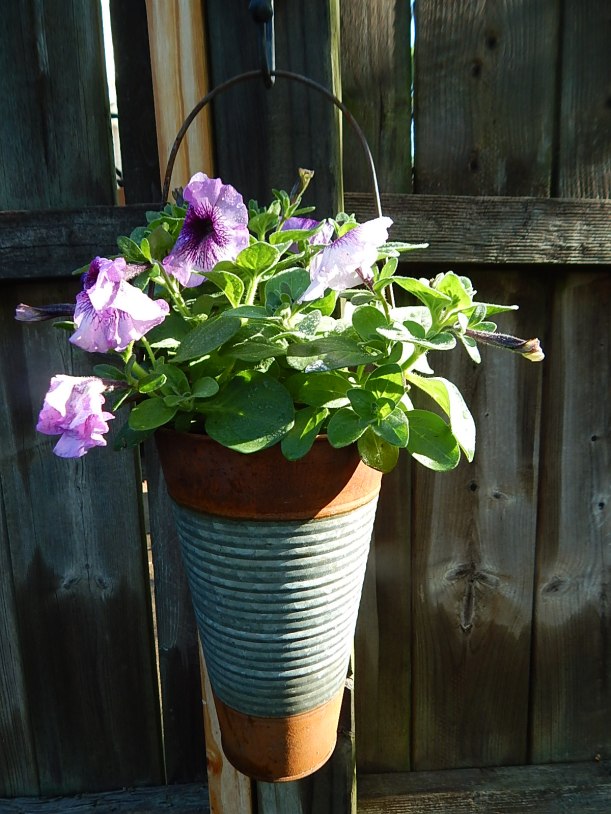
My oakleaf hydrangea, lush, laden with blooms and ready for a trim. Purple coneflower in front.
April showers did indeed bring May flowers to my Arch City garden. What a lovely month we’ve had; for the most part marked by relatively warm days and cool nights. Yet, as we wind our way through the month, the spring showers have not let up, and the forecast for early June in St. Louis looks pretty wet. (I just hope we don’t have a repeat of last year’s 19-inches of rain in June.) And true to form, our temperatures are on the rise as is the humidity and the frizz in my hair. What’s a girl to do?
Here’s an update of the garden.
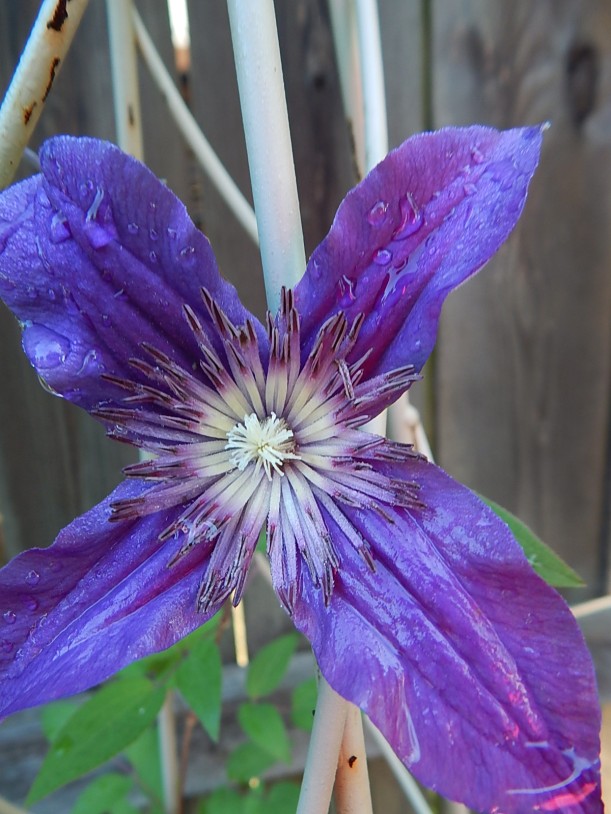
Clematis
Keeping with the order of things, the purples bloomed first, strutting their stuff throughout the garden. Purple clematis, English lavendar, “Walkers Low” catmint, hardy geranium and “May Night” salvia sprang to life earlier in May. Electric-hued gomphrena, Mexican heather, tall garden phlox and Russian sage will provide purple accents throughout the rest of the growing season.

English lavendar is a new addition to the garden. I have planted one in a pot as well.

Baptisia australis is one of the first to bloom in May.
The first bloom of roses was really quite beautiful and fragrant. I just trimmed the spent blooms.

A lovely trio of radrazz roses, salvia and cranesbill.
 Out popped the yellows as the month marched on. Stella d’Oro daylily and coreopsis began to bloom.
Out popped the yellows as the month marched on. Stella d’Oro daylily and coreopsis began to bloom.

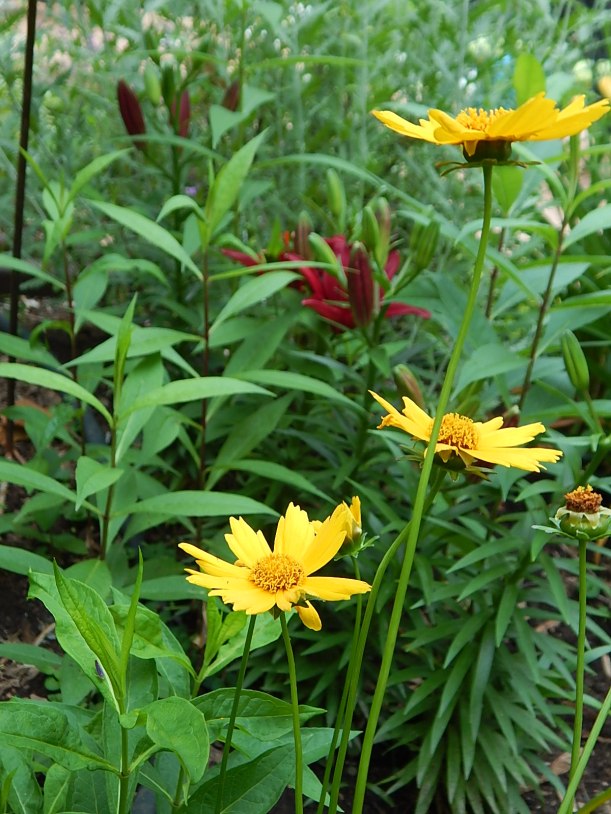
Petunias are a key feature to my containers this year. In fact, one container that held last year’s failed attempt at tomatoes is full with volunteer petunias from last year and volunteer butterfly milkweed.

I was wondering what to plant in this large container. The volunteers tood care of that decision.

Supertunia “Raspberry Blast” on top and “Blue Star” Laurentia axillaris on the bottom.

A combination container of gomphrena, yellow Surdaisy, cherry red angelonia and licorice plant.

“Amelia” shasta daisy, ready to spring open…

…fully blooming a few days later.
My favorite season is coming to a close and I am hopeful summer’s sizzlers will be equally as thrilling. Gardening friends, I hope you’ve enjoyed spring’s bouty as much as I have.

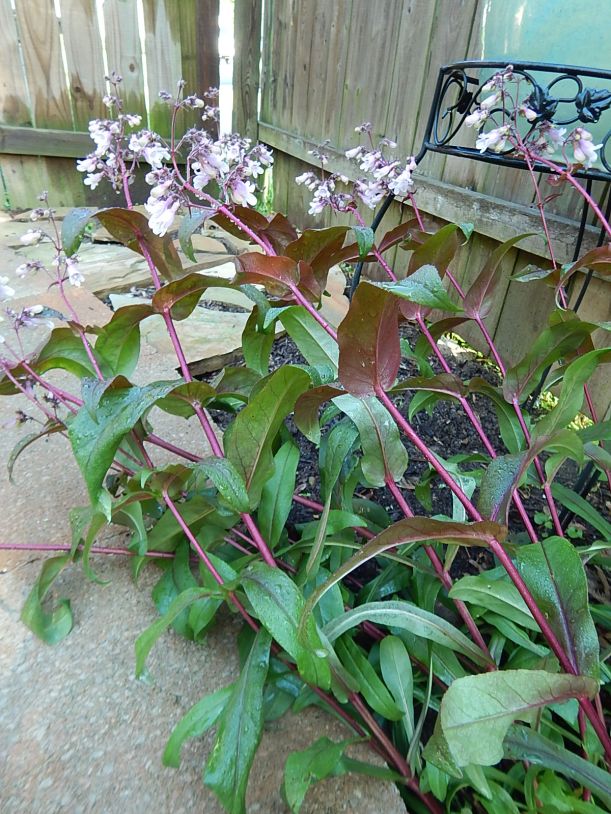
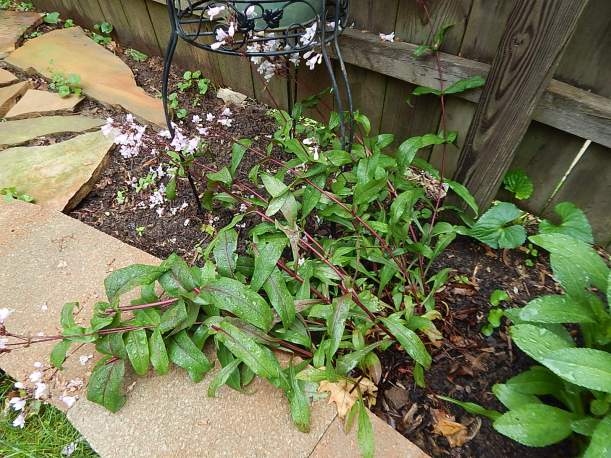
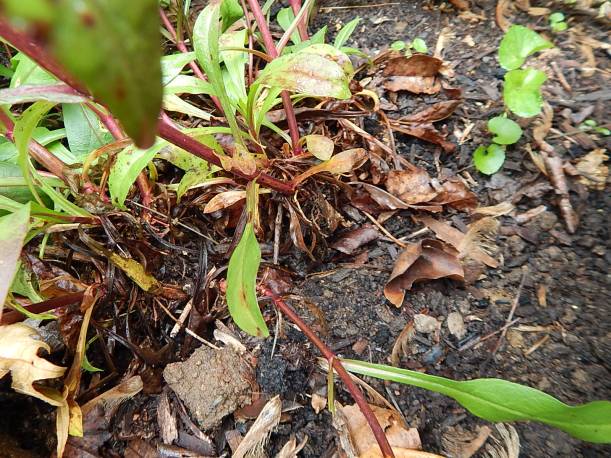
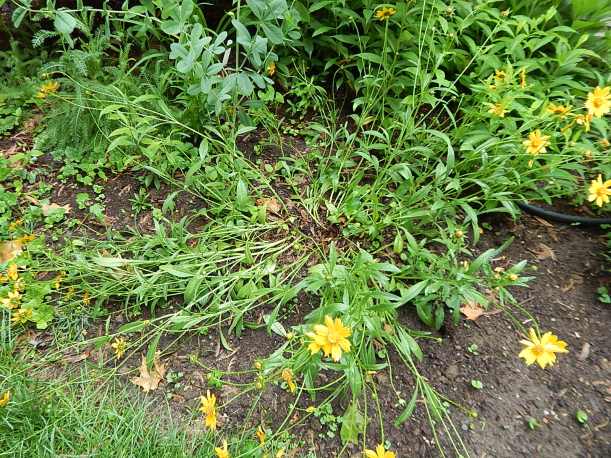



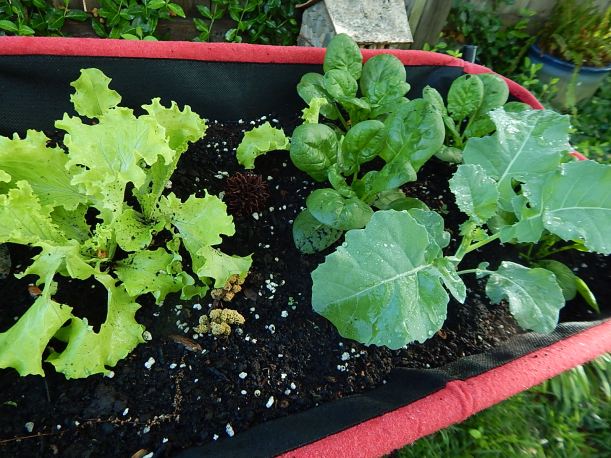
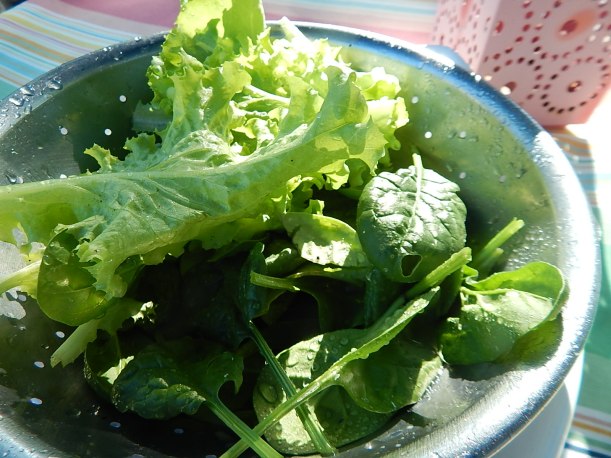
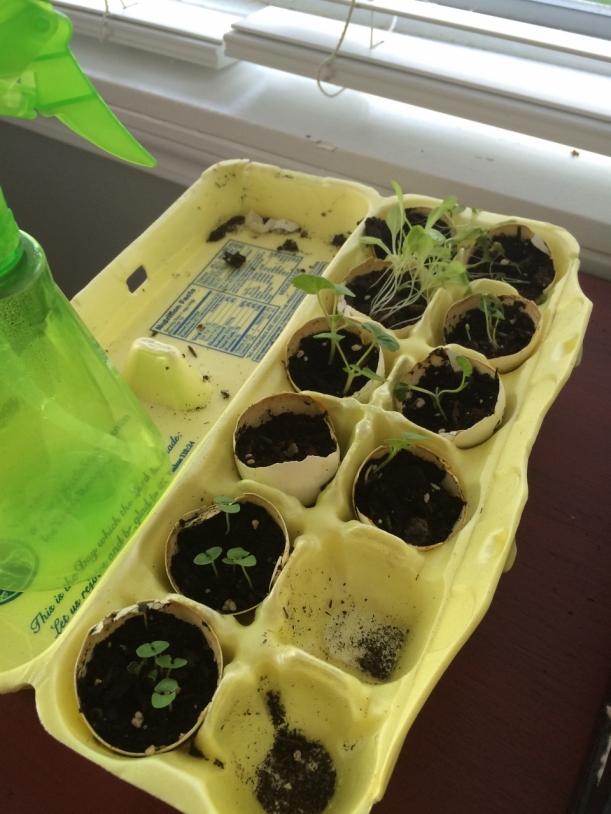
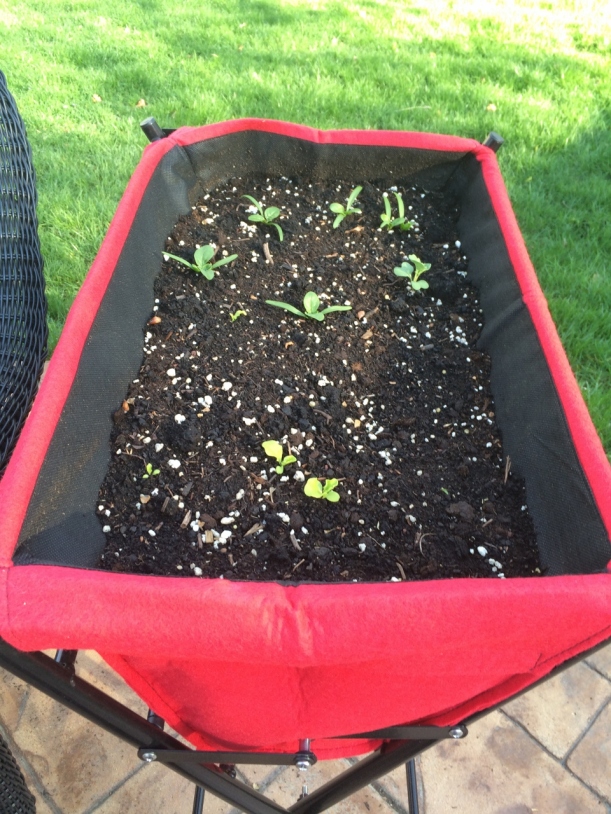
 Nicotiana. I plant this near a window so I can enjoy its evening fragrance. A fast grower, nicotiana attracts bees and likes sun. Nicotiana comes in pink, a limey green and white. I like the white but have planted all three. I don’t usually combine this in a container because it likes as much room as it can get.
Nicotiana. I plant this near a window so I can enjoy its evening fragrance. A fast grower, nicotiana attracts bees and likes sun. Nicotiana comes in pink, a limey green and white. I like the white but have planted all three. I don’t usually combine this in a container because it likes as much room as it can get. Begonia. Not just any begonia. It’s gotta be dragon wing begonia. The light my window boxes receive suits this plant just right, and dragon wing has become a staple. I usually pair them with a spiller because these plants are all the thriller I need! Here I’ve paired it with purple spiderwort, another easy grower. I’m partial to the coral blooms that gently cascade on a delicate stem. As you can see, they take over, but I’m not complaining.
Begonia. Not just any begonia. It’s gotta be dragon wing begonia. The light my window boxes receive suits this plant just right, and dragon wing has become a staple. I usually pair them with a spiller because these plants are all the thriller I need! Here I’ve paired it with purple spiderwort, another easy grower. I’m partial to the coral blooms that gently cascade on a delicate stem. As you can see, they take over, but I’m not complaining. Angelonia. I’m fairly new to this gem of a plant and I find the white cultivars are a bit more vigorous than the purple. However, I’ve only planted these in containers for two seasons and last season my containers (which had the purple variety) really didn’t perform well. This container had both white and purple varieties. I adored the yellow accent of calibrachoa, but it only bloomed once and looked pretty shabby.
Angelonia. I’m fairly new to this gem of a plant and I find the white cultivars are a bit more vigorous than the purple. However, I’ve only planted these in containers for two seasons and last season my containers (which had the purple variety) really didn’t perform well. This container had both white and purple varieties. I adored the yellow accent of calibrachoa, but it only bloomed once and looked pretty shabby. \
\ Gomphrena. I wish I had a better photo but you’ll get the idea. This is a real workhouse annual, providing bloom after tireless bloom all summer. Its cute pom-pom shaped spheres on long thin stems make for a great fill-in. I planted this last summer for the first time and combined it with sweet potato vine and petunias. I’d categorize this plant as fun, if there is such a plant category. The nearly neon purple bloom is a lot of fun too.
Gomphrena. I wish I had a better photo but you’ll get the idea. This is a real workhouse annual, providing bloom after tireless bloom all summer. Its cute pom-pom shaped spheres on long thin stems make for a great fill-in. I planted this last summer for the first time and combined it with sweet potato vine and petunias. I’d categorize this plant as fun, if there is such a plant category. The nearly neon purple bloom is a lot of fun too.








